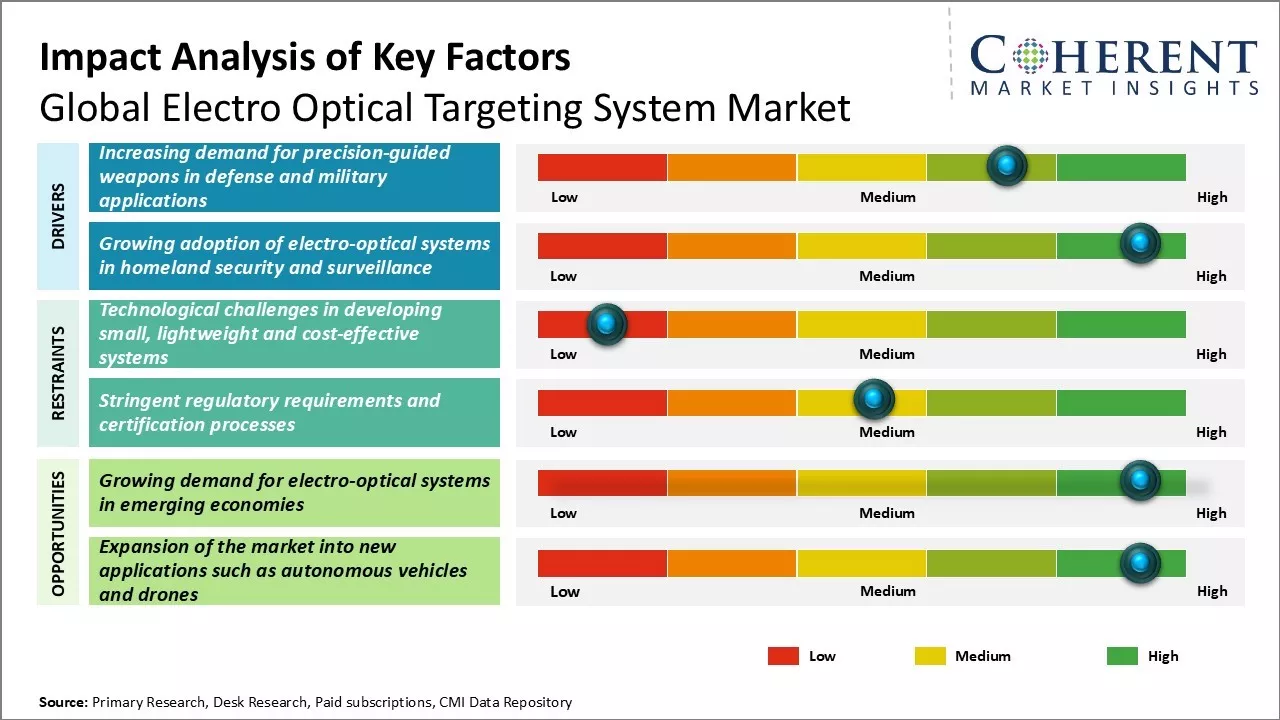Global electro optical targeting system market is estimated to be valued at USD 14.74 Bn in 2025 and is expected to reach USD 20.60 Bn by 2032, exhibiting a compound annual growth rate (CAGR) of 5.6% from 2025 to 2032.

To learn more about this report, Request sample copy
Increasing demand for precision-guided weapons in defense and military applications
Rising geopolitical tensions and increasing conflicts across various regions have prompted many countries to extensively modernize and strengthen their military weapons systems. With technologically advanced enemies, there has been growing need to minimize collateral damage and improve hit accuracy during operations. Electro optical targeting systems play a crucial role in fulfilling this need by enabling precision-guided missiles, bombs and ammunition. These systems offer day and night targeting capabilities using infrared, laser and optical technologies to accurately detect, track and engage targets from long ranges.
Most nations are now procuring new generations of missiles like cruise missiles and air-to-surface missiles that greatly rely on electro optical sensors for navigation and terminal guidance. Countries want to develop precision strike abilities to neutralize enemy infrastructure and installations from stand-off distances while avoiding non-combatant casualties. This has boosted demand for electro optical targeting systems that can continuously monitor a designated target area, detect imminent threats and guide weapons to impact points within meters of accuracy regardless of weather or lighting conditions. With ongoing modernization programs, militaries also aim to retrofit existing weapons with updated targeting pods and sights to improve their effectiveness over the long term.
Growing tensions along borders and rising maritime security issues have led many defense agencies to acquire new electro-optical payloads for surveillance systems. Unmanned aerial vehicles are being increasingly configured with day-night sensor turrets to monitor borders and coastal areas. Likewise, warships and patrol vessels are equipping with infrared and thermal cameras integrated onto small and medium-caliber weapon stations to detect, identify and potentially engage threats from long distances at sea under all conditions.
For instance, In February 2021, Elbit Systems Ltd., an Israel-based defense electronics company that develops and supplies a wide range of airborne, land, and naval systems for defense, homeland security, and commercial applications, announced that it had secured a contract worth approximately $82.0 million from BAE Systems Hägglunds AB, a subsidiary of the multinational defense, security, and aerospace company BAE Systems. The contract involves providing the Royal Netherlands Army with electro-optical commander sights and active protection systems.
Joining thousands of companies around the world committed to making the Excellent Business Solutions.
View All Our Clients